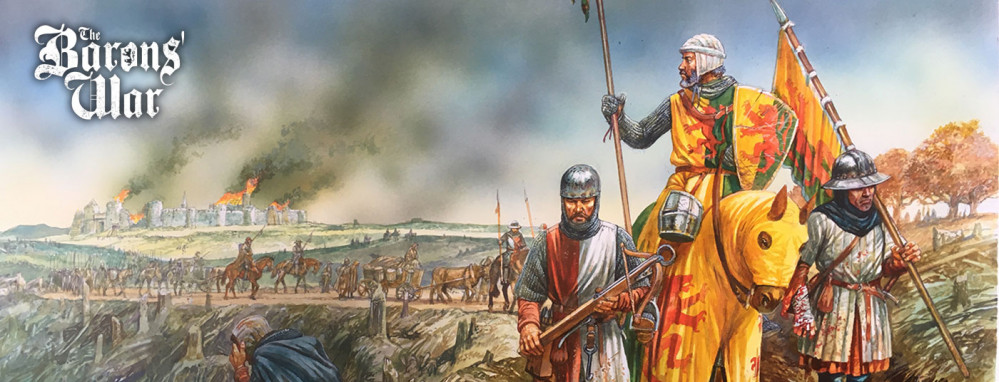
PanzerKaput Goes To Barons' War
Robin Hood, Robin Hood, Riding through the Glen
One of the things I love about the Baron’s War range is the fact that in the reign of King John one of the best known outlaws, Robin Hood lived, in theory at least. Robin Hood is a legendary heroic outlaw originally depicted in English folklore and subsequently featured in literature and film. According to legend, he was a highly skilled archer and swordsman. In some versions of the legend, he is depicted as being of noble birth, and in modern retellings he is sometimes depicted as having fought in the Crusades before returning to England to find his lands taken by the Sheriff. In the oldest known versions he is instead a member of the yeoman class. Traditionally depicted dressed in Lincoln green, he is said to have robbed from the rich and given to the poor.
Through retellings, additions, and variations, a body of familiar characters associated with Robin Hood has been created. These include his lover, Maid Marian, his band of outlaws, the Merry Men, and his chief opponent, the Sheriff of Nottingham. The Sheriff is often depicted as assisting Prince John in usurping the rightful but absent King Richard, to whom Robin Hood remains loyal. His partisanship of the common people and his hostility to the Sheriff of Nottingham are early recorded features of the legend, but his interest in the rightfulness of the king is not, and neither is his setting in the reign of Richard I. He became a popular folk figure in the Late Middle Ages, and the earliest known ballads featuring him are from the 15th century (1400s).
There have been numerous variations and adaptations of the story over the subsequent years, and the story continues to be widely represented in literature, film, and television. Robin Hood is considered one of the best known tales of English folklore.
The historicity of Robin Hood is not proven and has been debated for centuries. There are numerous references to historical figures with similar names that have been proposed as possible evidence of his existence, some dating back to the late 13th century. At least eight plausible origins to the story have been mooted by historians and folklorists, including suggestions that “Robin Hood” was a stock alias used by or in reference to bandits.
Robin Hood
The historicity of Robin Hood has been debated for centuries. A difficulty with any such historical research is that Robert was a very common given name in medieval England, and ‘Robin’ (or Robyn) was its very common diminutive, especially in the 13th century; it is a French hypocorism, already mentioned in the Roman de Renart in the 12th century. The surname Hood (or Hude, Hode, etc.) was also fairly common because it referred either to a hooder, who was a maker of hoods, or alternatively to somebody who wore a hood as a head-covering. It is therefore unsurprising that medieval records mention a number of people called ‘Robert Hood’ or ‘Robin Hood’, some of whom are known to have fallen foul of the law.
Another view on the origin of the name is expressed in the 1911 Encyclopædia Britannica which remarks that ‘hood’ was a common dialectical form of ‘wood’; and that the outlaw’s name has been given as ‘Robin Wood’. There are a number of references to Robin Hood as Robin Wood, or Whood, or Whod, from the 16th and 17th centuries. The earliest recorded example, in connection with May games in Somerset, dates from 1518.
Early references
The oldest references to Robin Hood are not historical records, or even ballads recounting his exploits, but hints and allusions found in various works. From 1261 onward, the names “Robinhood”, “Robehod”, or “Robbehod” occur in the rolls of several English Justices as nicknames or descriptions of malefactors. The majority of these references date from the late 13th century. Between 1261 and 1300, there are at least eight references to “Rabunhod” in various regions across England, from Berkshire in the south to York in the north.
Leaving aside the reference to the “rhymes” of Robin Hood in Piers Plowman in the 1370s, and the scattered mentions of his “tales and songs” in various religious tracts dating to the early 1400s, the first mention of a quasi-historical Robin Hood is given in Andrew of Wyntoun’s Orygynale Chronicle, written in about 1420. The following lines occur with little contextualisation under the year 1283:
Lytil Jhon and Robyne Hude
Wayth-men ware commendyd gude
In Yngil-wode and Barnysdale
Thai oysyd all this tyme thare trawale.
In a petition presented to Parliament in 1439, the name is used to describe an itinerant felon. The petition cites one Piers Venables of Aston, Derbyshire, “who having no liflode, ne sufficeante of goodes, gadered and assembled unto him many misdoers, beynge of his clothynge, and, in manere of insurrection, wente into the wodes in that countrie, like as it hadde be Robyn Hude and his meyne.”
The next historical description of Robin Hood is a statement in the Scotichronicon, composed by John of Fordun between 1377 and 1384, and revised by Walter Bower in about 1440. Among Bower’s many interpolations is a passage that directly refers to Robin. It is inserted after Fordun’s account of the defeat of Simon de Montfort and the punishment of his adherents, and is entered under the year 1266 in Bower’s account. Robin is represented as a fighter for de Montfort’s cause. This was in fact true of the historical outlaw of Sherwood Forest Roger Godberd, whose points of similarity to the Robin Hood of the ballads have often been noted.
Then arose the famous murderer, Robert Hood, as well as Little John, together with their accomplices from among the disinherited, whom the foolish populace are so inordinately fond of celebrating both in tragedies and comedies, and about whom they are delighted to hear the jesters and minstrels sing above all other ballads.
The word translated here as ‘murderer’ is the Latin sicarius (literally ‘dagger-man’), from the Latin sica for ‘dagger’, and descends from its use to describe the Sicarii, assassins operating in Roman Judea. Bower goes on to relate an anecdote about Robin Hood in which he refuses to flee from his enemies while hearing Mass in the greenwood, and then gains a surprise victory over them, apparently as a reward for his piety; the mention of “tragedies” suggests that some form of the tale relating his death, as per A Gest of Robyn Hode, might have been in currency already.
Another reference, discovered by Julian Luxford in 2009, appears in the margin of the “Polychronicon” in the Eton College library. Written around the year 1460 by a monk in Latin, it says:
Around this time [i.e., reign of Edward I], according to popular opinion, a certain outlaw named Robin Hood, with his accomplices, infested Sherwood and other law-abiding areas of England with continuous robberies.
Following this, John Major mentions Robin Hood within his Historia Majoris Britanniæ (1521), casting him in a positive light by mentioning his and his followers’ aversion to bloodshed and ethos of only robbing the wealthy; Major also fixed his floruit not to the mid-13th century but the reigns of Richard I of England and his brother, King John. Richard Grafton, in his Chronicle at Large (1569) went further when discussing Major’s description of “Robert Hood”, identifying him for the first time as a member of the gentry, albeit possibly “being of a base stock and lineage, was for his manhood and chivalry advanced to the noble dignity of an Earl” and not the yeomanry, foreshadowing Anthony Munday’s casting of him as the disposed Earl of Huntingdon. The name nevertheless still had a reputation of sedition and treachery in 1605, when Guy Fawkes and his associates were branded “Robin Hoods” by Robert Cecil. In 1644, jurist Edward Coke described Robin Hood as a historical figure who had operated in the reign of King Richard I around Yorkshire; he interpreted the contemporary term “roberdsmen” (outlaws) as meaning followers of Robin Hood.
Robert Hod of York
The earliest known legal records mentioning a person called Robin Hood (Robert Hod) are from 1226, found in the York Assizes, when that person’s goods, worth 32 shillings and 6 pence, were confiscated and he became an outlaw. Robert Hod owed the money to St Peter’s in York. The following year, he was called “Hobbehod”, and also came to known as “Robert Hood”. Robert Hod of York is the only early Robin Hood known to have been an outlaw. L.V.D. Owen in 1936 floated the idea that Robin Hood might be identified with an outlawed Robert Hood, or Hod, or Hobbehod, all apparently the same man, referred to in nine successive Yorkshire Pipe Rolls between 1226 and 1234. There is no evidence however that this Robert Hood, although an outlaw, was also a bandit.
Robert and John Deyville
Historian Oscar de Ville discusses the career of John Deyville and his brother Robert, along with their kinsmen Jocelin and Adam, during the Second Barons’ War, specifically their activities after the Battle of Evesham. John Deyville was granted authority by the faction led by Simon de Montfort, 6th Earl of Leicester over York Castle and the Northern Forests during the war in which they sought refuge after Evesham. John, along with his relatives, led the remaining rebel faction on the Isle of Ely following the Dictum of Kenilworth. De Ville connects their presence there with Bower’s mention of “Robert Hood” during the aftermath of Evesham in his annotations to the Scotichronicon.
While John was eventually pardoned and continued his career until 1290, his kinsmen are no longer mentioned by historical records after the events surrounding their resistance at Ely, and de Ville speculates that Robert remained an outlaw. Other points de Ville raises in support of John and his brothers’ exploits forming the inspiration for Robin Hood include their properties in Barnsdale, John’s settlement of a mortgage worth £400 paralleling Robin Hood’s charity of identical value to Sir Richard at the Lee, relationship with Sir Richard Foliot, a possible inspiration for the former figure, and ownership of a fortified home at Hood Hill, near Kilburn, North Yorkshire. The last of these is suggested to be the inspiration for Robin Hood’s second name as opposed to the more common theory of a head covering. Perhaps not coincidentally, a “Robertus Hod” is mentioned in records among the holdouts at Ely.
Although de Ville does not explicitly connect John and Robert Deyville to Robin Hood, he discusses these parallels in detail and suggests that they formed prototypes for this ideal of heroic outlawry during the tumultuous reign of Henry III’s grandson and Edward I’s son, Edward II of England.
Roger Godberd as Robin Hood
David Baldwin identifies Robin Hood with the historical outlaw Roger Godberd, who was a die-hard supporter of Simon de Montfort, which would place Robin Hood around the 1260s. There are certainly parallels between Godberd’s career and that of Robin Hood as he appears in the Gest. John Maddicott has called Godberd “that prototype Robin Hood”. Some problems with this theory are that there is no evidence that Godberd was ever known as Robin Hood and no sign in the early Robin Hood ballads of the specific concerns of de Montfort’s revolt.
Robin Hood of Wakefield
The antiquarian Joseph Hunter (1783–1861) believed that Robin Hood had inhabited the forests of Yorkshire during the early decades of the fourteenth century. Hunter pointed to two men whom, believing them to be the same person, he identified with the legendary outlaw:
- Robert Hood who is documented as having lived in the city of Wakefield at the start of the fourteenth century.
- “Robyn Hode” who is recorded as being employed by Edward II of England during 1323.
Hunter developed a fairly detailed theory implying that Robert Hood had been an adherent of the rebel Earl of Lancaster, who was defeated by Edward II at the Battle of Boroughbridge in 1322. According to this theory, Robert Hood was thereafter pardoned and employed as a bodyguard by King Edward, and in consequence he appears in the 1323 court roll under the name of “Robyn Hode”. Hunter’s theory has long been recognised to have serious problems, one of the most serious being that recent research has shown that Hunter’s Robyn Hood had been employed by the king before he appeared in the 1323 court roll, thus casting doubt on this Robyn Hood’s supposed earlier career as outlaw and rebel.
Robin Hood as an alias
It has long been suggested, notably by John Maddicott, that “Robin Hood” was a stock alias used by thieves. What appears to be the first known example of “Robin Hood” as a stock name for an outlaw dates to 1262 in Berkshire, where the surname “Robehod” was applied to a man apparently because he had been outlawed. This could suggest two main possibilities: either that an early form of the Robin Hood legend was already well established in the mid-13th century; or alternatively that the name “Robin Hood” preceded the outlaw hero that we know; so that the “Robin Hood” of legend was so called because that was seen as an appropriate name for an outlaw.
Mythology
There is at present little or no scholarly support for the view that tales of Robin Hood have stemmed from mythology or folklore, from fairies or other mythological origins, any such associations being regarded as later development. It was once a popular view, however. The “mythological theory” dates back at least to 1584, when Reginald Scot identified Robin Hood with the Germanic goblin “Hudgin” or Hodekin and associated him with Robin Goodfellow. Maurice Keen provides a brief summary and useful critique of the evidence for the view Robin Hood had mythological origins. While the outlaw often shows great skill in archery, swordplay and disguise, his feats are no more exaggerated than those of characters in other ballads, such as Kinmont Willie, which were based on historical events.
Robin Hood has also been claimed for the pagan witch-cult supposed by Margaret Murray to have existed in medieval Europe, and his anti-clericalism and Marianism interpreted in this light. The existence of the witch cult as proposed by Murray is now generally discredited.
Associated locations
Sherwood Forest
The early ballads link Robin Hood to identifiable real places. In popular culture, Robin Hood and his band of “merry men” are portrayed as living in Sherwood Forest, in Nottinghamshire. Notably, the Lincoln Cathedral Manuscript, which is the first officially recorded Robin Hood song (dating from approximately 1420), makes an explicit reference to the outlaw that states that “Robyn hode in scherewode stod”. In a similar fashion, a monk of Witham Priory (1460) suggested that the archer had ‘infested shirwode’. His chronicle entry reads:
‘Around this time, according to popular opinion, a certain outlaw named Robin Hood, with his accomplices, infested Sherwood and other law-abiding areas of England with continuous robberies’.
Nottinghamshire
Specific sites in the county of Nottinghamshire that are directly linked to the Robin Hood legend include Robin Hood’s Well, located near Newstead Abbey (within the boundaries of Sherwood Forest), the Church of St. Mary in the village of Edwinstowe and most famously of all, the Major Oak also located at the village of Edwinstowe. The Major Oak, which resides in the heart of Sherwood Forest, is popularly believed to have been used by the Merry Men as a hide-out. Dendrologists have contradicted this claim by estimating the tree’s true age at around eight hundred years; it would have been relatively a sapling in Robin’s time, at best.
Yorkshire
Nottinghamshire’s claim to Robin Hood’s heritage is disputed, with Yorkists staking a claim to the outlaw. In demonstrating Yorkshire’s Robin Hood heritage, the historian J. C. Holt drew attention to the fact that although Sherwood Forest is mentioned in Robin Hood and the Monk, there is little information about the topography of the region, and thus suggested that Robin Hood was drawn to Nottinghamshire through his interactions with the city’s sheriff. Moreover, the linguist Lister Matheson has observed that the language of the Gest of Robyn Hode is written in a definite northern dialect, probably that of Yorkshire. In consequence, it seems probable that the Robin Hood legend actually originates from the county of Yorkshire. Robin Hood’s Yorkshire origins are generally accepted by professional historians.
Barnsdale
A tradition dating back at least to the end of the 16th century gives Robin Hood’s birthplace as Loxley, Sheffield, in South Yorkshire. The original Robin Hood ballads, which originate from the fifteenth century, set events in the medieval forest of Barnsdale. Barnsdale was a wooded area covering an expanse of no more than thirty square miles, ranging six miles from north to south, with the River Went at Wentbridge near Pontefract forming its northern boundary and the villages of Skelbrooke and Hampole forming the southernmost region. From east to west the forest extended about five miles, from Askern on the east to Badsworth in the west. At the northernmost edge of the forest of Barnsdale, in the heart of the Went Valley, resides the village of Wentbridge. Wentbridge is a village in the City of Wakefield district of West Yorkshire, England. It lies around 3 miles (5 km) southeast of its nearest township of size, Pontefract, close to the A1 road. During the medieval age Wentbridge was sometimes locally referred to by the name of Barnsdale because it was the predominant settlement in the forest. Wentbridge is mentioned in an early Robin Hood ballad, entitled, Robin Hood and the Potter, which reads, “Y mete hem bot at Went breg,’ syde Lyttyl John”. And, while Wentbridge is not directly named in A Gest of Robyn Hode, the poem does appear to make a cryptic reference to the locality by depicting a poor knight explaining to Robin Hood that he ‘went at a bridge’ where there was wrestling’. A commemorative Blue Plaque has been placed on the bridge that crosses the River Went by Wakefield City Council.
The Saylis
The Gest makes a specific reference to the Saylis at Wentbridge. Credit is due to the nineteenth-century antiquarian Joseph Hunter, who correctly identified the site of the Saylis. From this location it was once possible to look out over the Went Valley and observe the traffic that passed along the Great North Road. The Saylis is recorded as having contributed towards the aid that was granted to Edward III in 1346–47 for the knighting of the Black Prince. An acre of landholding is listed within a glebe terrier of 1688 relating to Kirk Smeaton, which later came to be called “Sailes Close”. Professor Dobson and Mr. Taylor indicate that such evidence of continuity makes it virtually certain that the Saylis that was so well known to Robin Hood is preserved today as “Sayles Plantation”. It is this location that provides a vital clue to Robin Hood’s Yorkshire heritage. One final locality in the forest of Barnsdale that is associated with Robin Hood is the village of Campsall.
Church of Saint Mary Magdalene at Campsall
The historian John Paul Davis wrote of Robin’s connection to the Church of Saint Mary Magdalene at Campsall in South Yorkshire. A Gest of Robyn Hode states that the outlaw built a chapel in Barnsdale that he dedicated to Mary Magdalene:
I made a chapel in Bernysdale,
That seemly is to se,
It is of Mary Magdaleyne,
And thereto wolde I be.
Davis indicates that there is only one church dedicated to Mary Magdalene within what one might reasonably consider to have been the medieval forest of Barnsdale, and that is the church at Campsall. The church was built in the late eleventh century by Robert de Lacy, the 2nd Baron of Pontefract. Local legend suggests that Robin Hood and Maid Marion were married at the church.
Grave at Kirklees
At Kirklees Priory in West Yorkshire stands an alleged grave with a spurious inscription, which relates to Robin Hood. The fifteenth-century ballads relate that before he died, Robin told Little John where to bury him. He shot an arrow from the Priory window, and where the arrow landed was to be the site of his grave. The Gest states that the Prioress was a relative of Robin’s. Robin was ill and staying at the Priory where the Prioress was supposedly caring for him. However, she betrayed him, his health worsened, and he eventually died there. The inscription on the grave reads,
Hear underneath dis laitl stean
Laz robert earl of Huntingtun
Ne’er arcir ver as hie sa geud
An pipl kauld im robin heud
Sick [such] utlawz as he an iz men
Vil england nivr si agen
Obiit 24 kal: Dekembris, 1247
Despite the unconventional spelling, the verse is in Modern English, not the Middle English of the 13th century. The date is also incorrectly formatted – using the Roman calendar, “24 kal Decembris” would be the twenty-third day before the beginning of December, that is, 8 November. The tomb probably dates from the late eighteenth century.
The grave with the inscription is within sight of the ruins of the Kirklees Priory, behind the Three Nuns pub in Mirfield, West Yorkshire. Though local folklore suggests that Robin is buried in the grounds of Kirklees Priory, this theory has now largely been abandoned by professional historians.
All Saints’ Church at Pontefract
Another theory is that Robin Hood died at Kirkby, Pontefract. Michael Drayton’s Poly-Olbion Song 28 (67–70), published in 1622, speaks of Robin Hood’s death and clearly states that the outlaw died at ‘Kirkby’. This is consistent with the view that Robin Hood operated in the Went Valley, located three miles to the southeast of the town of Pontefract. The location is approximately three miles from the site of Robin’s robberies at the now famous Saylis. In the Anglo-Saxon period, Kirkby was home to All Saints’ Church, Pontefract. All Saints’ Church had a priory hospital attached to it. The Tudor historian Richard Grafton stated that the prioress who murdered Robin Hood buried the outlaw beside the road,
Where he had used to rob and spoyle those that passed that way … and the cause why she buryed him there was, for that common strangers and travailers, knowing and seeing him there buryed, might more safely and without feare take their journeys that way, which they durst not do in the life of the sayd outlaes.
All Saints’ Church at Kirkby, modern Pontefract, which was located approximately three miles from the site of Robin Hood’s robberies at the Saylis, is consistent with Richard Grafton’s description because a road ran directly from Wentbridge to the hospital at Kirkby.
Place-name locations
Within close proximity of Wentbridge reside several notable landmarks relating to Robin Hood. One such place-name location occurred in a cartulary deed of 1422 from Monkbretton Priory, which makes direct reference to a landmark named Robin Hood’s Stone, which resided upon the eastern side of the Great North Road, a mile south of Barnsdale Bar. The historians Barry Dobson and John Taylor suggested that on the opposite side of the road once stood Robin Hood’s Well, which has since been relocated six miles north-west of Doncaster, on the south-bound side of the Great North Road. Over the next three centuries, the name popped-up all over the place, such as at Robin Hood’s Bay, near Whitby in Yorkshire, Robin Hood’s Butts in Cumbria, and Robin Hood’s Walk at Richmond, Surrey.
Robin Hood type place-names occurred particularly everywhere except Sherwood. The first place-name in Sherwood does not appear until the year 1700. The fact that the earliest Robin Hood type place-names originated in West Yorkshire is deemed to be historically significant because, generally, place-name evidence originates from the locality where legends begin. The overall picture from the surviving early ballads and other early references indicate that Robin Hood was based in the Barnsdale area of what is now South Yorkshire, which borders Nottinghamshire.
Maid Marian is the heroine of the Robin Hood legend in English folklore, often taken to be his lover. She is not mentioned in the early, medieval versions of the legend, but was the subject of at least two plays by 1600. Her history and circumstances are obscure, but she commanded high respect in Robin’s circle for her courage and independence as well as her beauty and loyalty.
History
Maid Marian (or Marion) is never mentioned in any of the earliest extant ballads of Robin Hood. She appears to have been a character in May Games festivities (held during May and early June, most commonly around Whitsun) and is sometimes associated with the Queen or Lady of May or May Day. Jim Lees in The Quest for Robin Hood (p. 81) suggests that Maid Marian was originally a personification of the Virgin Mary. Francis J. Childe argues that she originally was portrayed as a trull associated with a lascivious Friar Tuck: “She is a trul of trust, to serue a frier at his lust/a prycker a prauncer a terer of shetes/a wagger of ballockes when other men slepes.” Both a “Robin” and a “Marian” character were associated with May Day by the 15th century, but these figures were apparently part of separate traditions; the Marian of the May Games is likely derived from the French tradition of a shepherdess named Marion and her shepherd lover Robin, recorded in Adam de la Halle’s Le Jeu de Robin et Marion, circa 1283. It isn’t clear if there was an association of the early “outlaw” character of Robin Hood and the early “May Day” character Robin, but they did become identified, and associated with the “Marian” character, by the 16th century. Alexander Barclay, writing in c. 1500, refers to “some merry fytte of Maid Marian or else of Robin Hood”. Marian remained associated with May Day celebrations even after the association of Robin Hood with May Day had again faded. The early Robin Hood is also given a “shepherdess” love interest, in Robin Hood’s Birth, Breeding, Valor, and Marriage (Child Ballad 149), his sweetheart is “Clorinda the Queen of the Shepherdesses”. Clorinda survives in some later stories as an alias of Marian.
The “gentrified” Robin Hood character, portrayed as a historical outlawed nobleman, emerges in the late 16th century. From this time, Maid Marian is cast in terms of a noblewoman, but her role was never entirely virginal, and she retained aspects of her “shepherdess” or “May Day” characteristics; in 1592, Thomas Nashe described the Marian of the later May Games as being played by a male actor named Martin, and there are hints in the play of Robin Hood and the Friar that the female character in these plays had become a lewd parody. Robin originally was called Ryder.
In the play, The Downfall of Robert, Earl of Huntingdon by Anthony Munday, which was written in 1598, Marian appears as Robin’s lawfully-wedded wife, who changes her name from Matilda when she joins him in the greenwood. She also has a cousin called Elizabeth de Staynton who is described as being the Prioress of Kirklees Priory near Brighouse in West Yorkshire. The 19th century antiquarian, Joseph Hunter, identified a Robert Hood, yeoman from Wakefield, Yorkshire, in the archives preserved in the Exchequer, whose personal story matched very closely the story of Robin in Anthony Munday’s play, and this Robert Hood also married a woman named Matilda, who changed her name to Marian when she joined him in exile in Barnsdale Forest (following the Battle of Boroughbridge) in 1322, and who also had a cousin named Elizabeth de Staynton who was Prioress of Kirklees Priory. If these parallels are not coincidental, then the Marian of Robin Hood fame, whose origins may be distinct from the Marian of the May games or of Monday’s play, may derive all her roots from her association with the historical Robert Hood of Wakefield.
In an Elizabethan play, Anthony Munday identified Maid Marian with the historical Matilda, daughter of Robert Fitzwalter, who had to flee England because of an attempt to assassinate King John (legendarily attributed to King John’s attempts to seduce Matilda). The “Matilda” theory of Maid Marian is further discussed in In later versions of Robin Hood, Maid Marian is commonly named as “Marian Fitzwalter”, only child of the Earl of Huntingdon, is the Maid Marian in McSpadden, J. Walker (1926). “Chapter I: How Robin Hood Became An Outlaw”. Robin Hood. London, UK: George Harrap – via Project Gutenberg.
In Robin Hood and Maid Marian (Child Ballad 150, perhaps dating to the 17th century), Maid Marian is “a bonny fine maid of a noble degree” said to excel both Helen and Jane Shore in beauty. Separated from her lover, she dresses as a page “and ranged the wood to find Robin Hood,” who was himself disguised, so that the two begin to fight when they meet. As is often the case in these ballads, Robin Hood loses the fight to comical effect, and Marian only recognizes him when he asks for quarter. This ballad is in the “Earl of Huntington” tradition, a supposed “historical identity” of Robin Hood forwarded in the late 16th century.
20th-century pop culture adaptations of the Robin Hood legend almost invariably have featured a Maid Marian and mostly have made her a highborn woman with a rebellious or tomboy character. In 1938’s The Adventures of Robin Hood, she is a courageous and loyal woman (played by Olivia de Havilland), and a ward of the court, an orphaned noblewoman under the protection of King Richard. Although always ladylike, her initial antagonism to Robin springs not from aristocratic disdain but from aversion to robbery.
In The Story of Robin Hood and His Merrie Men (1952), she, despite being a lady-in-waiting to Eleanor of Aquitaine during the Crusades, is in reality a mischievous tomboy capable of fleeing boldly to the countryside disguised as a boy. In the Kevin Costner epic Robin Hood: Prince of Thieves, she is a maternal cousin to the sovereign, while in the BBC adaption of 2006, she is the daughter of the former sheriff and was betrothed to Robin before his leaving for the Holy Land, and in his absence embarked on her own crusade against poverty in aiding the poor in a fashion similar to what Robin later achieved, becoming a skilled fighter in the process and leading the people to refer to her as ‘The Night Watchman’.
Maid Marian’s role as a prototypical strong female character has made her a popular focus in feminist fiction. Theresa Tomlinson’s Forestwife novels (1993–2000) are told from Marian’s point of view, portray Marian as a high-born Norman girl escaping entrapment in an arranged marriage. With the aid of her nurse, she runs away to Sherwood Forest, where she becomes acquainted with Robin Hood and his men.
Little John is a companion of Robin Hood who serves as his chief lieutenant and second-in-command of the Merry Men. He is one of only a handful of consistently named characters that relate to Robin Hood and one of the two oldest Merry Men, alongside Much the Miller’s Son. His name is an ironic reference to his giant frame, as he is usually portrayed in legend as a huge warrior – a seven-foot-tall master of the quarterstaff.
Folklore
Little John appears in the earliest recorded Robin Hood ballads and stories and in the earliest references to Robin Hood by Andrew of Wyntoun in 1420 and by Walter Bower in 1440. In the early tales, Little John is shown to be intelligent and highly capable. In “A Gest of Robyn Hode”, he captures the sorrowful knight and, when Robin Hood decides to pay the knight’s mortgage for him, accompanies him as a servant. In “Robin Hood’s Death”, he is the only one of the Merry Men that Robin takes with him. In the 15th-century ballad commonly called “Robin Hood and the Monk”, Little John leaves in anger after a dispute with Robin. When Robin Hood is captured, it is Little John who plans his leader’s rescue. In thanks, Robin offers Little John leadership of the band, but John refuses. Later depictions of Little John portray him as less cunning.
The earliest ballads do not feature an origin story for this character. According to a 17th-century ballad, he was a giant of a man who was at least seven feet tall, and introduced when he tried to prevent Robin from crossing a narrow bridge, whereupon they fought with quarterstaves, and Robin was overcome. Despite having won the duel, John agreed to join his band and fight alongside him. From then on he was called Little John in whimsical reference to his size. This scene is almost always re-enacted in film and television versions of the story. In some modern film versions, Little John loses the duel to Robin.
Starting from the ballad tradition, Little John is commonly shown to be the only Merry Man present at Robin Hood’s death.
Despite a lack of historical evidence for his existence, Little John is reputed to be buried in a churchyard in the village of Hathersage, Derbyshire. A modern tombstone marks the supposed location of his grave, which lies under an old yew tree. This grave was owned by the Nailor (Naylor) family, and sometimes some variation of “Nailer” is given as John’s surname. In other versions of the legends, his name is given as John Little, enhancing the irony of his nickname.
According to local legend, Little John built himself a small cottage across the River Derwent from the family home. The site now has a 15th century Grade 2 listed ex-farmhouse and barn built on it, called Nether House at Offerton.
In Dublin, a local legend suggests that Little John visited the city in the 12th century and was hanged there.
Little John was a figure in the Robin Hood plays and games during the 15th to 17th centuries, particularly those held in Scotland.
Many historical figures are named Little John and John Little, but it is debatable which – if any – are the inspiration for the legendary character.
Friar Tuck is a companion to Robin Hood in the legends about that character.
History
Tuck is a common character in modern Robin Hood stories, which depict him as a jovial friar and one of Robin’s Merry Men. The figure of Tuck was common in the May Games festivals of England and Scotland during the 15th through 17th centuries. He appears as a character in the fragment of a Robin Hood play from 1475, sometimes called Robin Hood and the Knight or Robin Hood and the Sheriff, and a play for the May games published in 1560 which tells a story similar to “Robin Hood and the Curtal Friar”. (The oldest surviving copy of this ballad is from the 17th century.) The character entered the tradition through these folk plays, and he was originally partnered with Maid Marian: “She is a trul of trust, to serue a frier at his lust/a prycker a prauncer a terer of shetes/a wagger of ballockes when other men slepes”. His appearance in “Robin Hood and the Sheriff” means that he was already part of the legend around the time when the earliest surviving copies of the Robin Hood ballads were being made.
A friar with Robin’s band in the historical period of Richard the Lion-Hearted would have been impossible because the period predates friars in England (but see Eustace the Monk, a medieval outlaw); however, the association of Robin Hood with Richard I was not made until the 16th century; the early ballad “A Gest of Robin Hood” names his king as “Edward”.
What follows is a story which includes different versions of the legend. He was a former monk of Fountains Abbey (or in some cases, St Mary’s Abbey in York, which is also the scene of some other Robin Hood tales) who was expelled by his order because of his lack of respect for authority. Because of this, and in spite of his taste for good food and wine, he became the chaplain of Robin’s band. In Howard Pyle’s The Merry Adventures of Robin Hood, he was specifically sought out as part of the tale of Alan-a-Dale: Robin has need of a priest who will marry Allan to his sweetheart in defiance of the Bishop of Hereford.
In many tales, from “Robin Hood and the Curtal Friar” to The Merry Adventures of Robin Hood, his first encounter with Robin results in a battle of wits in which first one and then the other gains the upper hand and forces the other to carry him across a river. This ends in the Friar tossing Robin into the river.
In some tales, he is depicted as a physically fit man and a skilled swordsman and archer with a hot-headed temper. However, most commonly, Tuck is depicted as a fat, bald and jovial monk with a great love of food and ale, though the two are not mutually exclusive. Sometimes, the latter depiction of Tuck is the comic relief of the tale.
Two royal writs in 1417 refer to Robert Stafford, a Sussex chaplain who had assumed the alias of Frere Tuk. This “Friar Tuck” was still at large in 1429. These are the earliest surviving references to a character by that name.
Will Scarlet (also Scarlett, Scarlock, Scadlock, Scatheloke, Scathelocke and Shacklock) is a prominent member of Robin Hood’s Merry Men. He is present in the earliest ballads along with Little John and Much the Miller’s Son.
The confusion of surnames has led some authors to distinguish them as belonging to different characters. The Elizabethan playwright Anthony Munday featured Scarlet and Scathlocke as half-brothers in his play The Downfall of Robert, Earl of Huntington. Howard Pyle included both a Will Scathelock and a Will Scarlet in his Merry Adventures of Robin Hood. Will Stutely may also exist as a separate character because of a mistaken surname.































![TerrainFest 2024 Begins! Build Terrain With OnTableTop & Win A £300 Prize! [Extended!]](https://images.beastsofwar.com/2024/10/TerrainFEST-2024-Social-Media-Post-Square-225-127.jpg)









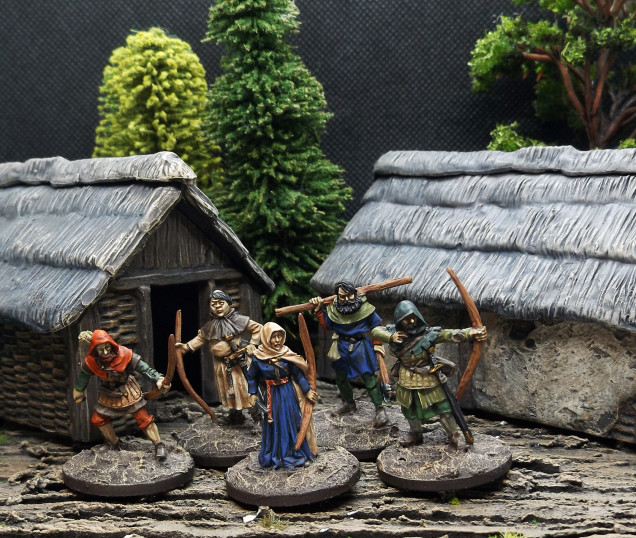
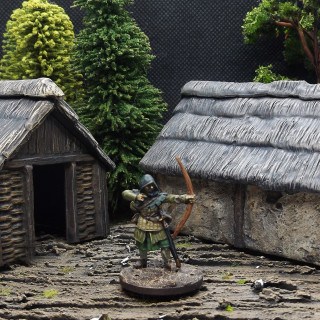
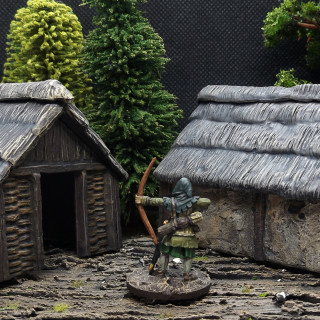

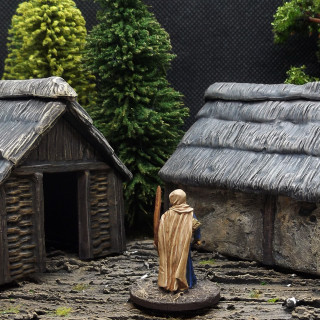

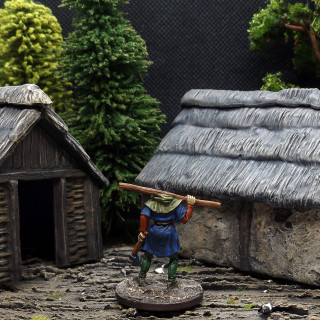
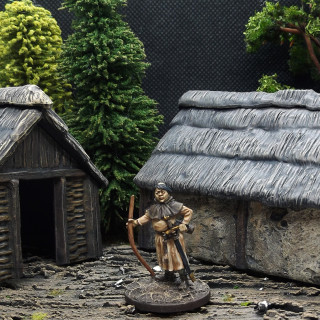
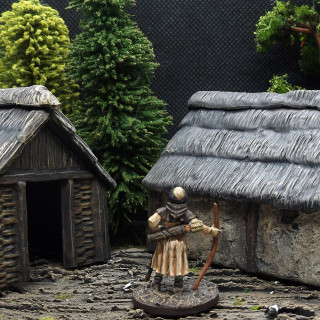
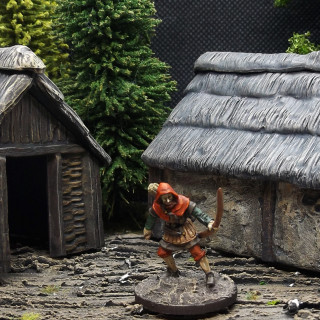
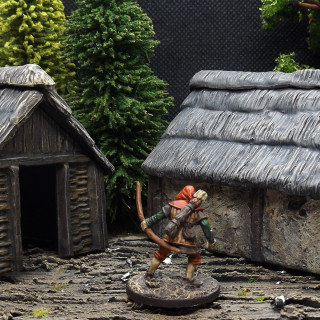

































Leave a Reply